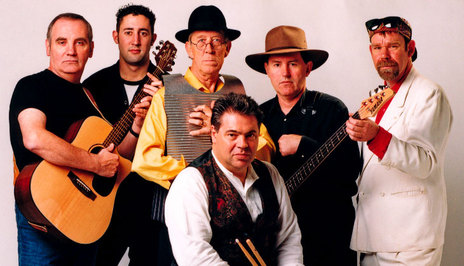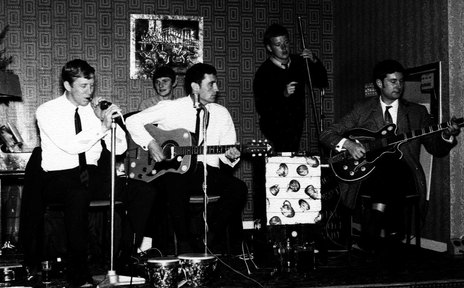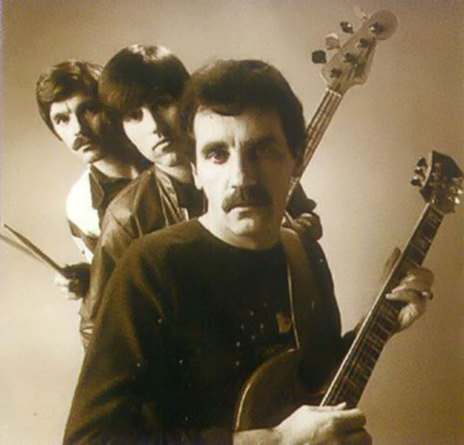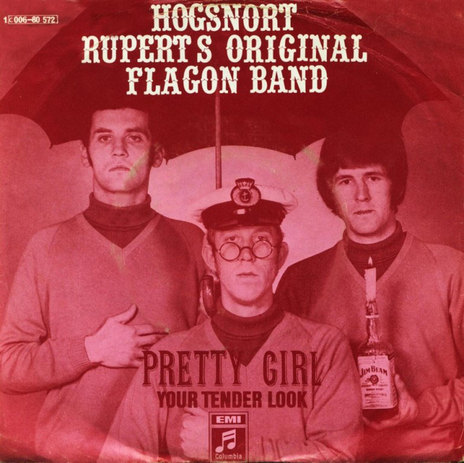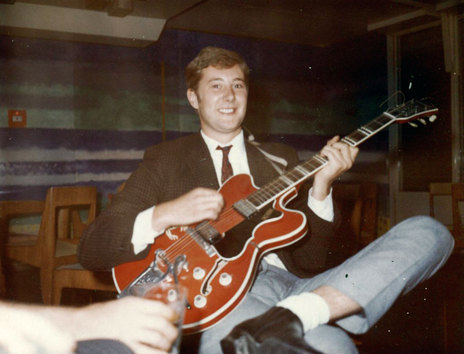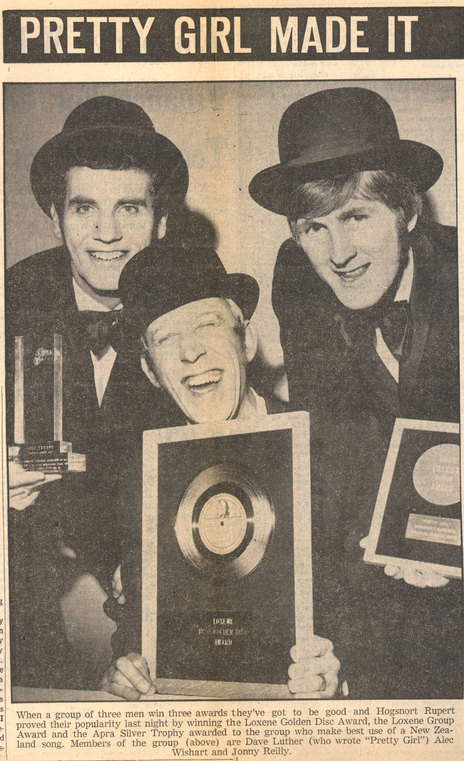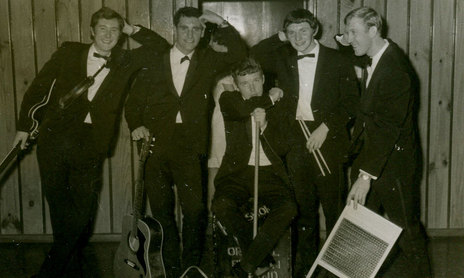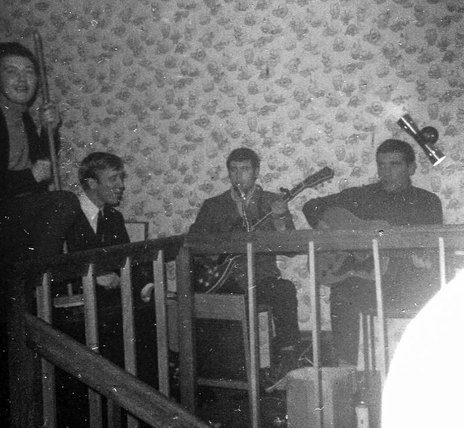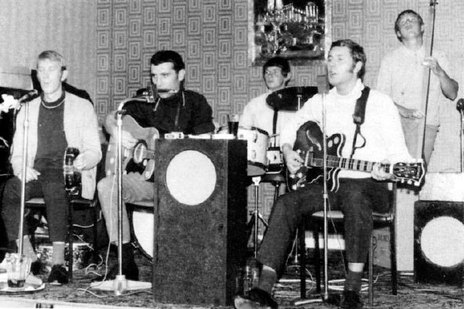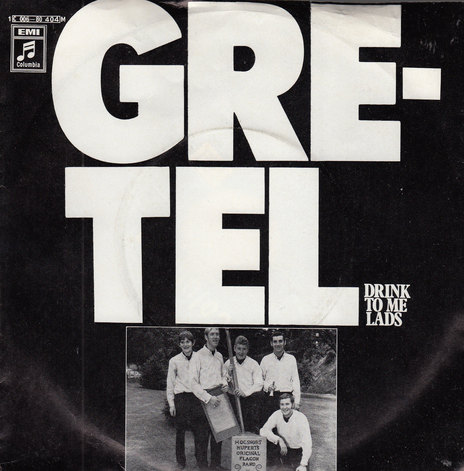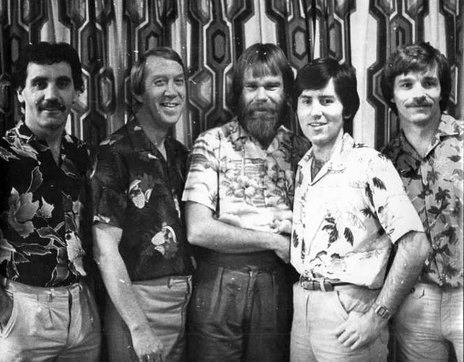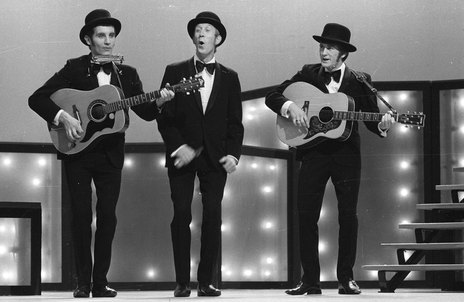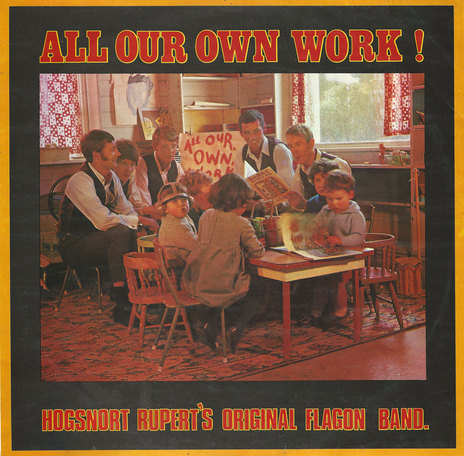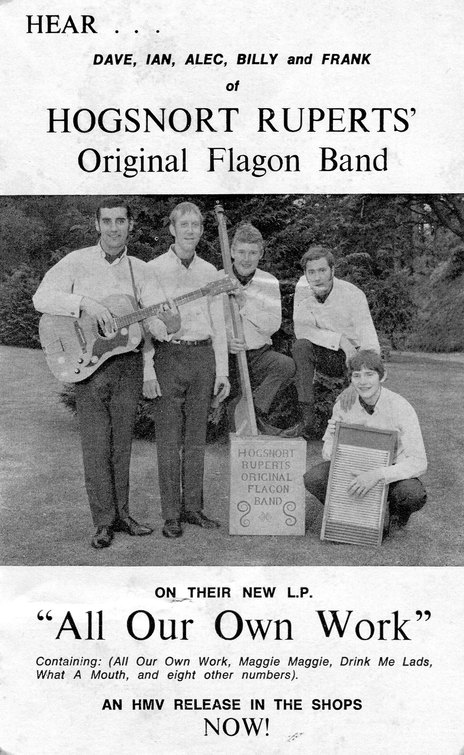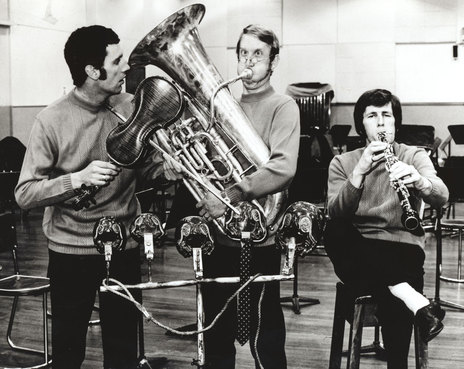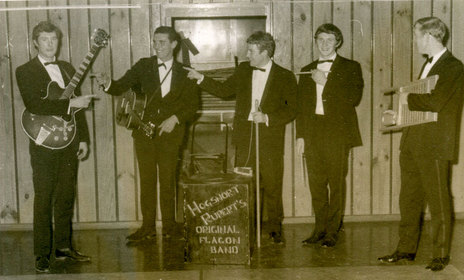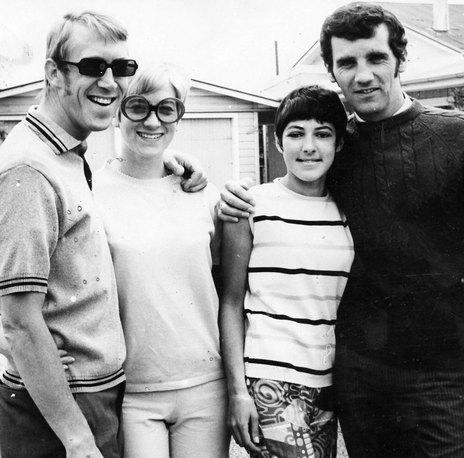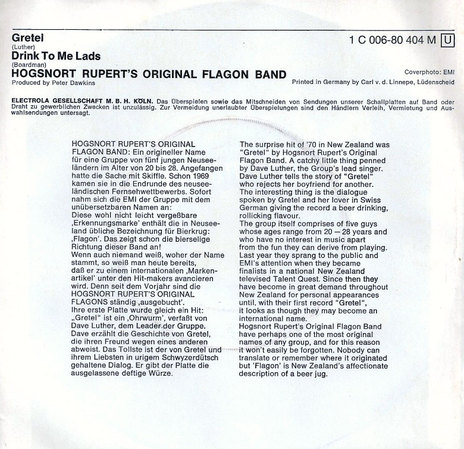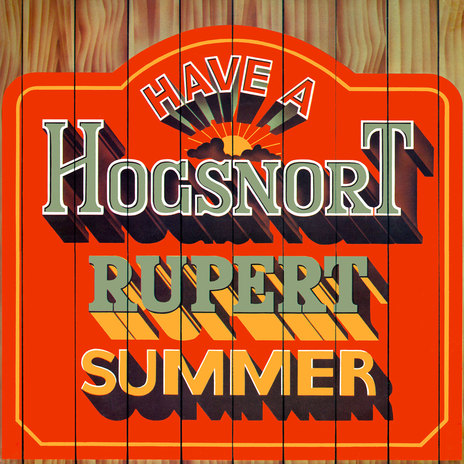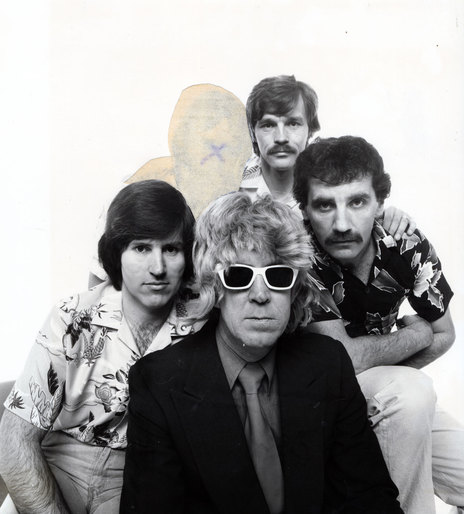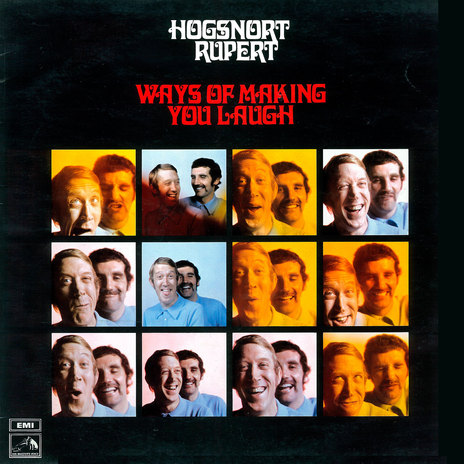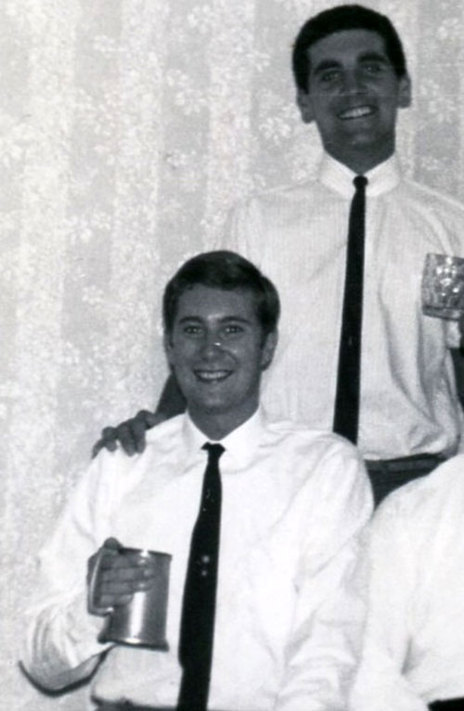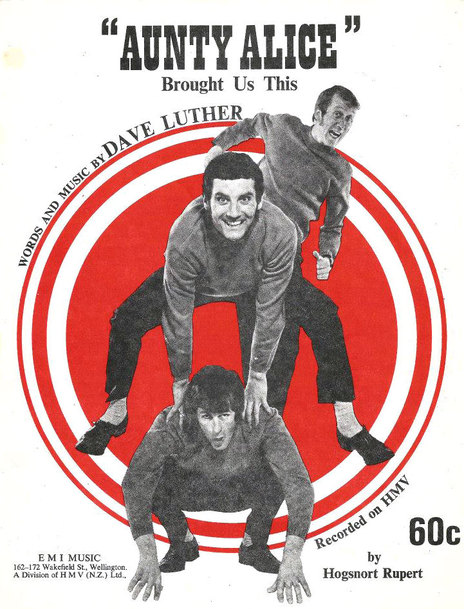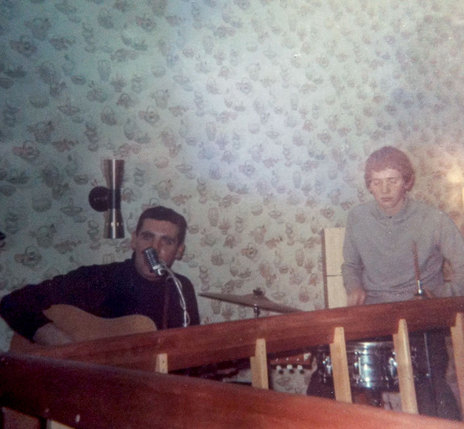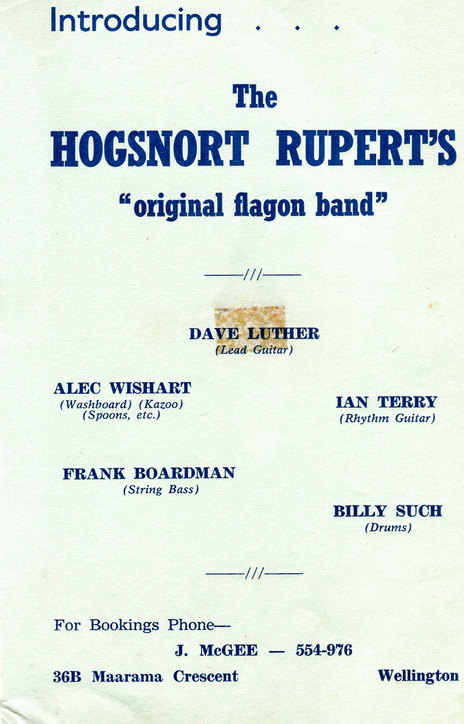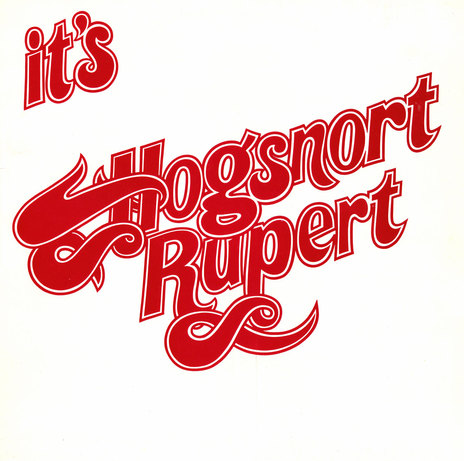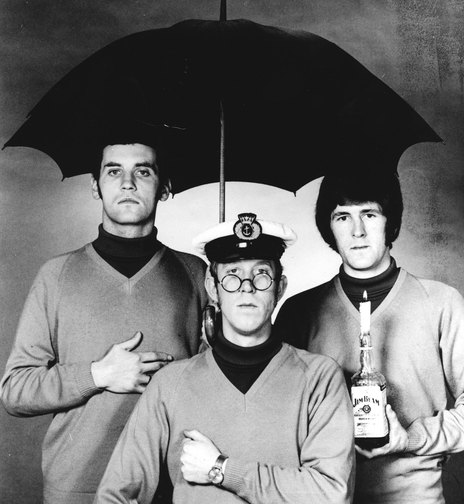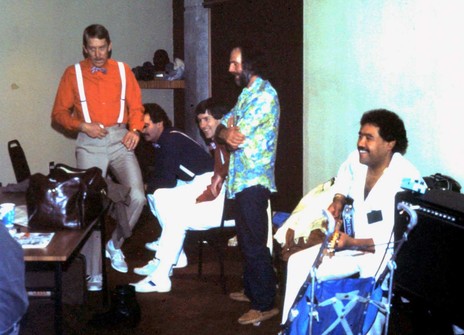Centred around songwriter Dave Luther and affable frontman Alec Wishart, Hogsnort Rupert followed up with two albums produced by Peter Dawkins on HMV and toured New Zealand as part of promoter Joe Brown’s stable but had called it a day less than a year after ‘Pretty Girl’.
They reunited in 1981 and the band’s side project Dave and the Dynamos released the only locally made No.1 single of 1983 with ‘Life Begins At 40’, which was also released in Australia and the UK and would later be included by two national publications in their countdowns of worst songs.
On January 1, 2000, Dave Luther opened The Dominion newspaper to find the song had been declared No.7 in a list of the 10 worst songs of the millennium. When Rip It Up named ‘Life Begins At 40’ as the second-worst song ever he decided to ring the magazine.
“Hello. It’s Dave Luther from Dave and the Dynamos. You’ve called our song the second-worst song ever.”
“Hello. It’s Dave Luther from Dave and the Dynamos. You’ve called our song the second-worst song ever,” he said. “Um … well, it wasn’t me,” came the reply from the flustered receptionist. “Well, I’ve got one question for you,” Luther continued. “Why weren’t we number one?”
The criticism did not bother the Hogsnort Rupert songwriter. “We were only ever interested in making people feel good,” he told AudioCulture. “I'm not trying to say I've written one of the best songs ever.”
At the age of 10, Luther was fronting the Dave Luther Skiffle Group in his hometown of Farnborough in northeast Hampshire and at 13 appeared on The Carroll Levis Discovery Show on the BBC playing guitar for The Blackjacks.
The Blackjacks recorded one of Luther’s songs in a little studio in Denmark Street, London’s Tin Pan Alley, before changing their name to Daniel Boone & The Renegades, recording more of Luther’s songs and opening for such touring acts as The Searchers and Freddie And The Dreamers.
When he and his fiancée called off their engagement, Luther decided he wanted to see the world and so he emigrated to New Zealand to work as an electrician. Arriving in Wellington in 1966 at the height of six o’clock closing, he joined a likely looking bunch queued up to get into the Chez Paree coffee bar. Within a couple of hours there was a guitar in his hand and he was performing in one of the city’s folk hot spots.
At the immigrant hostel in Trentham he met another singer-guitarist, Ian Terry, and they decided to flat together with three other new arrivals. Born in Bradford, Terry had bought his first guitar at 18 before joining The Intruders. Restless and adventurous, he headed for New Zealand in 1966 where a job as a telephone technician with the New Zealand Post Office waited.
Luther and Terry were soon playing two-hour solo spots at the Chez Paree. A rival coffee bar, The Cantata, hired the pair individually but they increasingly appeared as a duo. They also joined the Diamond Football Club and would take their guitars to after-match parties. Although Luther played soccer for the club, Terry’s interest was purely social – the clubs were able to stay open longer than pubs.
It was at one such party, after Diamond had merged with Wellington United in 1968 to form Wellington Diamond United, that Dave Luther met Wellington United’s Alec Wishart, always with a kazoo in his top pocket, and they started singing together.
Wishart had been a toolmaker and tool designer in Battersea, South London, before arriving in New Zealand in 1965 and being given a job with a company that repaired and rebuilt field lights and levels for the Ministry of Works. He enjoyed traditional and modern jazz as well as skiffle but had never been involved in anything musical in England.
En route to New Zealand on the Rangitoto, Wishart befriended Liverpudlian Frankie Boardman, who was emigrating for a job as a post office technician with the NZPO. Boardman played guitar and had seen the embryonic Beatles at The Cavern Club and Litherland Town Hall in Liverpool. By 1968, he too was playing soccer for Wellington Diamond United.
At one after-match get-together in a Wellington pub, Luther, Wishart and Boardman decided to start a band.
At one after-match get-together in a Wellington pub, Luther, Wishart and Boardman decided to start a band. Under-age and drunk teammate Billy Such declared, “I’ll play drums.” With no previous musical experience, he took lessons from New Zealand Symphony Orchestra percussionist Bud Jones.
A teenaged Such had followed his parents to New Zealand in 1966 – he had remained in England for three months playing soccer – and he, too, was employed by the NZPO. A regular at the Id nightclub, he was inspired to take up the drums after seeing Paddy Beach thumping the skins with Joyful Crye, who would perform Jimi Hendrix’s Are You Experienced LP from start to finish.
With Luther on guitar, Wishart on kazoo, Boardman on tea-chest bass and Such on drums, Luther brought in Ian Terry and the band began regular Wednesday night sessions at Wishart’s flat. It wasn’t long before the soccer club’s secretary suggested they come and entertain at the clubrooms.
But first they needed a name for the poster. Luther and Terry were sitting at the bar one day when an old boy came in to have his flagons filled. They were certain they weren’t a jug band or a skiffle band, but how about a flagon band? And surely there were no other flagon bands in the world, thus they became The Original Flagon Band.
So they were for a couple of weeks until it was decided, in the best English tradition, they needed to add an odd-sounding nickname. Flutey Harper and Spitfire Mooney were short-listed before the band was renamed Hogsnort Rupert’s Original Flagon Band. It was a name Luther recalled from graffiti back home.
They started performing a repertoire of skiffle, rock and roll, folk and Luther’s comedy songs at the club’s Adelaide Road rooms for free beer and when they got a gig at the Hungaria Association Football Club they received free beer and free goulash. They branched out to other places and soon had a following at Quinn’s Post in Upper Hutt.
Hogsnort Rupert’s Original Flagon Band booked in to HMV to record four Luther-penned songs as a keepsake and something to send home to their families in England.
After much encouragement from Luther and Terry’s landlady Jo Johnson, the tea lady at HMV Studios, Hogsnort Rupert’s Original Flagon Band booked in to HMV to record four Luther-penned songs as a keepsake and something to send home to their families in England. When it came time to pay, the engineer Frank Douglas told the band to hold off until he played the songs to producer Howard Gable. Gable liked what he heard and offered them a five-year recording contract.
Their debut album, All Our Own Work!, was engineered by Douglas and produced by Gable. It contained eight of Luther’s compositions and two by Frankie Boardman, although the album cover has his ‘I’m Going Home’ erroneously credited to Luther. When Gable left for Australia, HMV’s young gun Peter Dawkins came on board to produce the covers ‘The Morning After The Party’ and ‘What A Mouth’, although he remained a bit standoffish.
HMV encouraged the band to enter the NZBC’s Studio One. They performed ‘When I Was Young’ in the heats and finished third in the final with ‘Maggie Maggie’, both Luther songs off the debut album. The win earned them a spot on the televised Miss Wellington Show where they performed a new song called ‘Gretel’.
With the album selling poorly and HMV losing interest, Luther had visited the company’s sales manager Graham Feasey to ask for one more session to record ‘Gretel’. “We’ll give you four hours,” Feasey told him.
Dawkins produced the track – which was based on a harmonica riff that sounded like an accordion – with Terry singing and Luther’s Swiss electrician friend Urs and his wife providing a spoken Swiss German interlude. With the help of the television exposure, ‘Gretel’ was a No.2 hit in Wellington and made the national top 20. It even sold 10,000 copies in West Germany!
The success rekindled HMV’s interest and sparked the first murmurings of the band going professional. However, Billy Such, Ian Terry and Frankie Boardman had all converted to the Church of Christ during the previous 18 months and were finding it difficult to balance the band with church activities and beliefs and their jobs at the NZPO, and all three decided to leave.
Eager to maintain momentum, Luther headed to Chez Paree to look for replacements. He was continually pointed in the direction of 22-year-old Lower Hutt singer-guitarist John Reilly, who had graduated from his brother’s band Mike and the Beavers to gaining his own following as a solo artist in the folk scene. With similar early influences to Luther, he fit like a glove.
Bass guitarist John Newton and drummer Graeme Brown were also recruited. Newton had played with The Regency Set while Brown had been with Wanganui band The Minors, who had recorded singles for HMV, before he moved to Wellington in 1966.
Luther hit upon the short-lived idea of doing an album of sounds from all around the world and intended ‘Pretty Girl’ as a kind of West Indian ska number.
The new line-up headed into HMV with Peter Dawkins to record a Dave Luther song called ‘Pretty Girl’. After the success of ‘Gretel’ in West Germany, Luther hit upon the short-lived idea of doing an album of sounds from all around the world and intended ‘Pretty Girl’ as a kind of West Indian ska number.
John Newton overdubbed piano and Dawkins had Graeme Brown put his drumstick in a cowbell and play 16th notes to give the chorus some movement. Alec Wishart sung in a faux West Indian accent, unintentionally slipping into a Spike Milligan-like Indian accent for the spoken second chorus, and even added a Cornish “Come on, my lover, give us a kiss!” to bring in the end choruses.
As the song came together with overdubbed tambourine and handclaps, Luther’s harmonica, Wishart’s kazoo and a distinctive high vocal harmony from Reilly, Dawkins became quite excited. Having already produced New Zealand No.1 hits for Shane, The Fourmyula and Craig Scott since being hired by HMV 18 months earlier, he was adamant ‘Pretty Girl’ would be a hit.
HMV released the single and the NZBC filmed Hogsnort Rupert’s Original Flagon Band performing ‘Pretty Girl’ for Studio One as an update on the previous year’s finalists. But before it could be televised, Luther and Wishart folded the band due to the old “musical differences” chestnut.
The single had barely sold 700 copies in about six weeks when Studio One screened the clip. As the camera came in close on Wishart and he uttered the words “Come on, my lover, give us a kiss!” he gave a cheeky wink. Peter Dawkins would later say the song sold on that wink.
He rang Dave Luther the following Monday and said, “Get the band together! You’ve got to form something – we’ve just had orders in for 2,000 copies of ‘Pretty Girl’.” It continued to sell at 2,000 copies a day, made it to No.1 and kept on selling in excess of 55,000.
Luther and Wishart brought back John Reilly but decided to hire various rhythm sections as the need arose. Dawkins became their quasi-booking agent, taking 20 per cent, until they joined the Joe Brown stable. They used session musicians on the Have A Hogsnort Rupert Summer album – which included ‘Aunty Alice (Bought Us This)’, ‘Aubrey’ and a sample of their live show recorded at the Beefeater Arms –and it shot to No.1.
‘Pretty Girl’ was the highest-selling single in New Zealand that year, outdoing ‘Let It Be’ by The Beatles, ‘Bridge Over Troubled Water’ by Simon & Garfunkel and ‘Lola’ by The Kinks.
By the end of 1970, ‘Pretty Girl’ was the highest-selling single in New Zealand that year, outdoing ‘Let It Be’ by The Beatles, ‘Bridge Over Troubled Water’ by Simon & Garfunkel and ‘Lola’ by The Kinks. When it was released in Great Britain at year’s end, Top Of The Pops requested the Studio One film clip but refused to air it when they found it was in black-and-white.
The band dropped the ‘Original Flagon Band’ title and began advertising themselves as simply Hogsnort Rupert. They toured as part of Joe Brown’s Miss New Zealand shows, supported Roger Whittaker through the country and then as part of a Joe Brown country music show along with John Hore, Eddie Low and the Hamilton County Bluegrass Band.
While on tour it became evident that John Reilly was battling his own demons. When he went AWOL after a Christchurch show and didn’t catch up with the tour until it reached Wellington he was let go.
Luther and Wishart held it together for a bit longer, recording one more album with Peter Dawkins – Ways Of Making You Laugh, which included the singles ‘Monday’ and ‘Charlie Was A Good Man’ – before shutting up shop and, independent of each other, travelling to England.
Wishart returned after six months and moved to Napier, honing his stagecraft with the Napier Frivolity Minstrels musical society. Six months later, Luther returned and formed his own production and management company called Mardi-Gras Music. He produced singles for Wishart, including his own ‘Grandad’s Piano’, and managed Bulldogs Allstar Goodtime Band, co-writing their 1973 hit ‘Everyone Knows’ and producing their Bulldoggin’ LP.
In 1976 he became the guitarist in The Jo Michat Group for what would be a five-year residency at the Burma Motor Lodge in Johnsonville. Occasionally Wishart would make the trip down from Napier to do a floorshow with the band.
On one such trip in 1981, Luther and Wishart started talking about making another album. Within the Jo Michat line-up they had a ready-made band in Margaret Gill (piano), Bernie Reber (drums) and former Bulldogs Allstar Goodtime Band bassist Kevin Findlater. They called in ex-Bulldogs vocalist Neil Worboys on guitar, banjo and harmonica and the new Hogsnort Rupert entered the studio.
The single ‘Tokyo Rose’, written by former Timberjack guitarist (and another ex-Bulldog) John Donoghue, was released on Epic before the comeback LP It’s Hogsnort Rupert appeared on Luther’s own Mardi-Gras label in 1982. It included a radically reworked ‘Pretty Girl’ just to see if they could “do it differently”.
The band went out on the RSA/cosmopolitan club touring circuit but things had changed in their absence. With the likes of Billy T. James and Prince Tui Teka setting the bar high, audiences now expected a show full of comedy and music.
It was an opportune time to exploit Alec Wishart’s humour and the band wrote a 2½-hour scripted show built around the old Hogsnort Rupert favourites as well as the Neil Worboys-fronted Bulldogs hits ‘Miss September’ and ‘Everyone Knows’.
Part of the show was a talent quest skit where Wishart would undergo numerous costume changes portraying characters such as Trembling Teddy Boyes and Big Rex Horton. During one costume change the rest of the band assumed the guise of ageing rockers Dave and the Dynamos who performed a short ditty about turning 40.
By 1983, the ditty had developed into a complete song called ‘Life Begins At 40’.
By 1983, the ditty had developed into a complete song called ‘Life Begins At 40’ which Luther demoed and gave to Wishart to learn as the next Hogsnort Rupert single. The more people who heard the demo, the more suggested Luther sing the song himself and so he decided he would.
He approached CBS and EMI but neither company were keen, so he pressed 400 or so copies of the demo under the Dave and the Dynamos name on his own Mardi-Gras label and sent a few off to radio stations.
Lindsay Yeo started spinning the single on his 2ZB breakfast show in Wellington, but it was immediately after Merv Smith played it on the corresponding 1ZB show in Auckland that Luther received a phone call from CBS A&R director Gilbert Egdell, who was suddenly interested. Egdell suggested that CBS take care of distribution.
Dave and the Dynamos’ ‘Life Begins At 40’ hit the No.1 spot in New Zealand that September – the only locally made No.1 of 1983. ‘Outlook For Thursday’ by DD Smash had peaked at No.3, ‘Sierra Leone’ by Coconut Rough at No.5 and the Netherworld Dancing Toys EP at No.10.
Luther was holidaying in the UK when ‘Life Begins At 40’ was released there on the Epic label in November. He rang CBS headquarters in London and was met with great enthusiasm by the woman on the other end of the line when he explained he was Dave from Dave and the Dynamos.
She read him through the new releases on Epic that week – Dave and the Dynamos’ ‘Life Begins At 40’, one from Shakin’ Stevens, one from Luther Vandross and Michael Jackson’s ‘Thriller’. “Come and see us for morning tea when you’re in London on Wednesday,” she finished.
By the time Wednesday rolled around, Luther had come down with the flu and the visit slipped his mind. When David Hamilton started playing the song on his BBC Radio 2 show, Luther thought he’d better touch base with the London office again. This time the woman was anything but enthusiastic. “Where were you on Wednesday? Everybody was here!” The single died in the UK after that.
It took a year for a Dave and the Dynamos follow-up to appear, the Jim Hall-produced ‘Can’t Spell Rhythm’. Despite a video directed by Simon Morris and featuring cameos from Gliding On actors Ross Jolly and Ray Henwood, Fair Go reporter Philip Alpers and guitar-playing brothers Martin and Rob Winch, the song failed to chart.
Hogsnort Rupert split again in 1988 but they have performed regularly since 1995, based around constants Luther, Wishart, Findlater, Worboys and drummer Dean Ruscoe, who was a sideman with the band in the early 1970s before touring the world with The Maori Volcanics. Luther’s son Graeme had a stint on keyboards and Wishart’s son Dean has guested on drums.
They supported The Beach Boys and Cliff Richard at Napier’s Mission Estate Winery Concerts and released albums Hypnotic, A Tribute To The Goodtimes and A Touch Of Hoggers, and in 2014 were part of Dame Malvina Major’s Diamond Jubilee Celebration Tour.
So, 44 years after ‘Pretty Girl’ took out The Beatles and made Hogsnort Rupert a household name, are there any regrets for Dave Luther? “Well, I still wish we’d gone with Flutey Harper’s Original Flagon Band,” he grinned.
–
Alec Wishart passed away on 22 January 2016.
